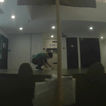Achievements and Experiences
Within Ngee Ann Polytechnic
Leadership Roles

2023-2024
President & Research Head, NP Astronomy Club
As president of my club, my role is to oversee the management and processes within the club, and build good relationships with fellow members, advisors and clubs, as well as external stakeholders.
My role as the research head is to ensure that sharing sessions and activities are well-planned in advance. It also serves as a platform to share my interest in astronomy with like-minded peers.
I have also been exploring ways to include more elements of STEM into sessions. For example, I have organised an experiment on gravity and free fall with Arduino microcontrollers and infrared sensors.
CCA Achievements

June 2023
Astrochallenge 2023
Participation in Senior Category
While this was my fifth time participating in Astrochallenge, it was my first in the Senior Category.
Questions in the Senior Category, especially those in the Team Round, involved a deep understanding of astronomy, with highly sophisticated applications in Physics and Mathematics.
The Individual Round was significantly harder that year for all categories.
My first time in the Senior category meant it was the first time participating in the Observational round, which was challenging given that we needed to use a telescope with many restrictions. (e.g. no finderscope)
Nonetheless, it was still a fruitful experience, being able to participate with different groupmates, as well as meet my juniors and peers.
Academic Achievements
November 2023
Ngee Ann Polytechnic Scholarship (AY23/24)
I am glad to have been a recipient of the prestigious Ngee Ann Polytechnic Scholarship, which proves my commitment to both excelling in my studies, as well as my co-curricular activities.
The scholarship would help me to achieve greater heights and fulfil my dreams, while worrying less about financial drawbacks.
Academic Achievements
Arduino-controlled Mangonel Catapult
Applications of Design Thinking and Electronic Prototyping

For my Integrated Real-world Project 1 (IRP1) module, we were required to design a catapult that was able to launch a projectile accurately as far as possible. For my final design, I designed a mangonel catapult powered by rubber bands. To control the launching arm, a servo motor connected to an Arduino is used. The user can operate the catapult by lowering the launching arm, rotating a knob and pressing a button, in order for the projectile to be launched.
The button allowed the user to launch the projectile with the push of a button. The knob allowed the user to adjust the strength of the launcher (by adjusting how low the launching arm would be pushed down), hence it would affect the initial velocity and motion of the projectile.
The success rate of my catapult launcher was quite decent, hitting the target for a total of 2 out of 5 attempts, with one hit being really close to the target.
Furthermore, each of us was required to design our own targets for the catapults to aim at and try to hit.
This experience has encouraged me to chase my dreams, and to take on ideas at the soonest possibility, before I would forget them. I have also learnt to never give up and remain forward-looking. If a design fails, I would look at my design again and find the cause of the failure, and then rectify it to make a functional/more improved prototype.
Experiences
Robotic Fan prototype
Applications of Design Thinking and Electronic Prototyping

As part of my core module, Innovation Made Possible (IMP), we were tasked to come up with ideas to solve various problems in society.
My group's topic was about study spaces in school, and our solution was a smart robotic fan that was able to move around automatically. Additionally, it came with a touchscreen that would allow the user to change the fan settings, as well as get some useful information about the Ngee Ann Poly campus.
Our prototype was physical, and included some interactive elements. During the making of the prototype, I worked closely with my groupmates. I was mostly in charge of the electronic components within the prototype. There were two electronic systems in the prototype, one for the fan and one for movement. The fan's system involved an ESP32, and the screen connects to it via Bluetooth. The app on the screen sends out commands to the ESP32 to change fan speeds and other settings. For the movement system, a TV remote was used to control the movement of the robot (left, right, back, forward). The wheels are connected to four motors, which are controlled by an Arduino using an L298N driver.
After the final presentation, my group felt a sense of achievement, as our lecturer was particularly interested in the interactive elements of our prototype.










